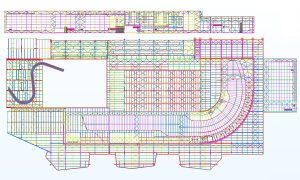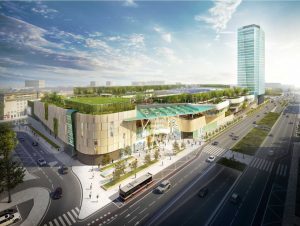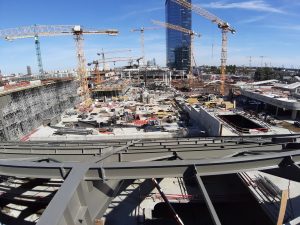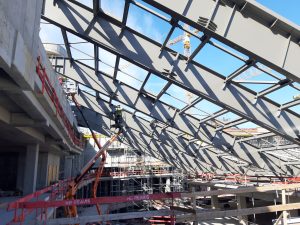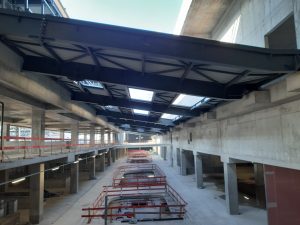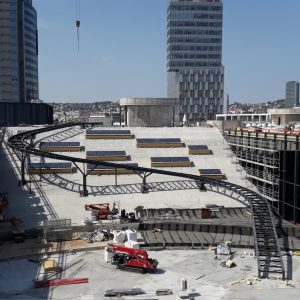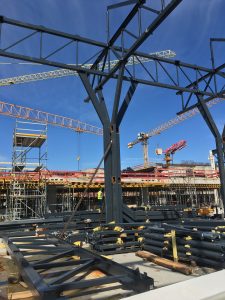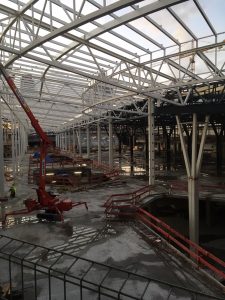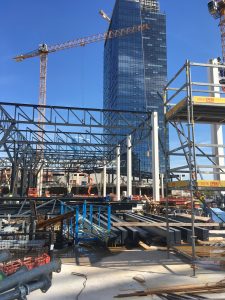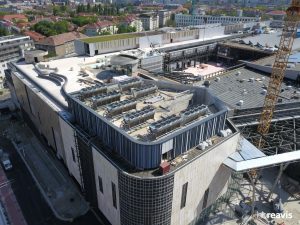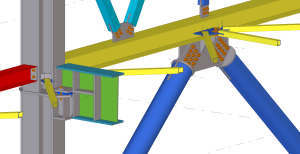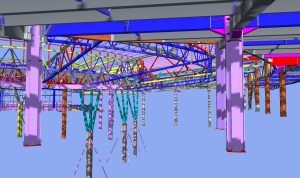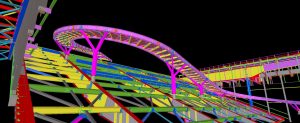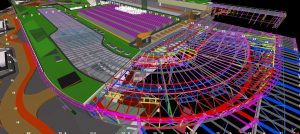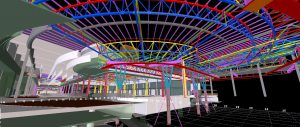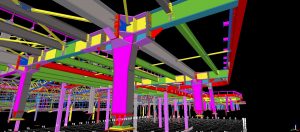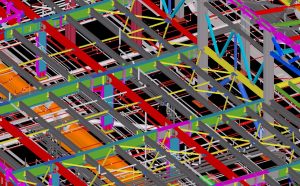 Winnaar van categorie in de landen:
Winnaar van categorie in de landen:
Polyfunkčný objekt – AUTOBUSOVÁ STANICA MLYNSKÉ NIVY
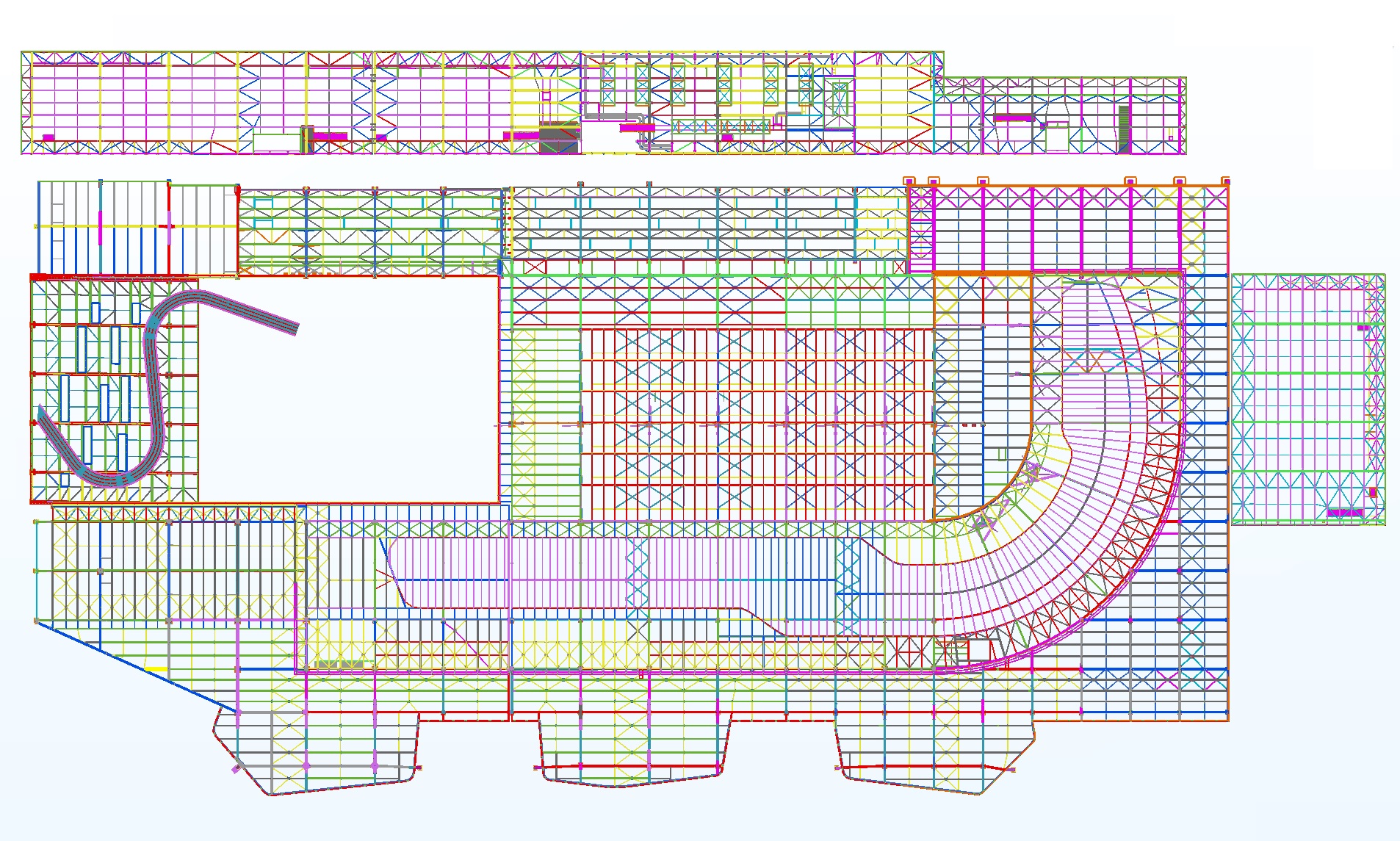
| Categorie | Commerciële projecten |
|---|---|
| Jaar | 2020 |
| Land | Slovakia |
| Organisatie | HESCON s.r.o |
| Auteur | Kolektív HESCON |
| Co-auteurs | Video: HB Reavis |
| Cliënt | NORDEC, HB Reavis |
| Plaats van constructie | Bratislava, Mlynské Nivy |
| Tags |
Dominantný projekt výstavby autobusovej stanice medzinárodného významu v spojení s modernou tržnicou, kancelárskymi priestormi a parkom pre širokú komunitu patrí medzi najvačšie a nadčasové stavby súčasnosti v strednej Európe .
• OBCHODY 70 000 m2
• KANCELÁRIE 30 000 m2
• TRŽNICA 3 000 m2
• AUTOBUSOVÁ STANICA 30 000 m2
• 55 000 ODHADOVANÁ DENNÁ NÁVŠTEVNOSŤ
• 2 150 PARKOVACÍCH MIEST
• DENNE 20000 CESTUJÚCICH Z VIAC AKO 760 MIEST NA SLOVENSKU I V ZAHRANIČÍ
To všetko priamo v srdci pulzujúcej biznis zóny na hranici historického mesta. Ide o kombináciu viacerých dôležitých funkcií do uceleného konceptu, ktorý kombinuje dopravný uzol, tradičný retail a moderné maloobchodné trendy so zábavou, životným štýlom a prelomovým konceptom spájajúcim tržnicu so zelenou strechou.
Takzvanou „čerešničkou na torte“ je Zelená strecha s komunitnými záhradami, včelínom a kompletným vybavením na aktívny oddych a šport. Zelená strecha Stanice Nivy je novou platformou na komunitný život obyvateľov štvrte so zákutiami na rodinné pikniky, ale aj dokonalým obedňajším útočiskom pre zamestnancov z priľahlého biznis dištriktu. Takúto strechu s parkom na streche nemá každý obchod.
Spoločnosť HESCON s.r.o mala tú češť spolu s generálnym dodávateľom NORDEC pretaviť architektonické riešenie Londýnskej firmy Benoy a generálneho projektanta ateliéru SiebertTalaš do realizačnej stupňa a výrobnej dokumentácie oceľových konštrukcií vyššie opísanej Zelenej strechy, ktorá pozostáva z parku, bežeckej dráhy, vonkajšieho workout centra a množstva atrakcií pre rodiny.
Išlo o cca 3000 t oceľových konštrukcií pozostávajúcich z hlavnej strechy so svetlíkom vo vyššej časti prechádzajúcej do tzv. spodných zelených striech zastrešujúcich strojovne na ktorých boli využité spriahnuté oceľobetónové prvky , prestrešenia tržnice, prestrešenia rámp, halových objektov strojovní, lávky pre peších, veľkorozponových prestrešní tzv. šikmej a vloženej strechy, schodiska a umývarne autobusov. Pre rozsah projekt a časovú náročnosť bolo samozrejmosťou využitie Multi-user systému, kde súbežne na projekte pracovalo značné množstvo množstvo konštruktérov.
Vrámci projektu bola použitá široká škála staticko- konštrukčných riešení od klasických valcovaných prierezov, po zvárané profily otvorené, uzavreté, krížové zvárané stĺpy z valcovaných prierezov, ohýbané prvky, zalomené a oblúkové väzníky, spriahnuté stropnice a mnoho iných zaujímavých riešení a exponovaných detailov vrátane elastomerových ložísk, tak aby bolo dokonale vystihnuté statické pôsobenie jednotlivých prvkov konštrukcie.
Medzi najzaujmavjšie konštrukčné prvky patria stromové stĺpy, točitá lávka pre peších a hlavné schodisko.
Softvér Tekla Structures bol ideálnym nástrojom tvorby realizačného projektu nosných oceľových konštrukcií a následne výrobnej a montážnej dokumentácie, V neposlednom rade využitie pre samotnú montáž prakticky zabezpečilo aj v takomto technicky náročnom a časovom tlaku presné a včasné zrealizovanie konštrukcie. Pri danom harmonograme výstavby, dodávok a montáže technológie bol softvér Tekla Structures jedinou možnosťou zabezpečiť klientovi dodržanie zmluvných termínov a zabezpečenie flexibility pri otázkach vyplývajúcich z realizačného procesu stavby. Medzi výzvy patrila aj samotná veľkosť modelu a množstvo dátových referencií s ktorými bolo nutné v rámci projektu pracovať. Vďaka tomuto spôsobu projektovania sme boli schopní v relatívne krátkom čase zapracovať všetky požiadavky klienta, jednotlivých profesií, dodávateľov technológie ako aj požiadavky investora bez termínového dopadu na realizáciu o čom v reále hovorí aj samotná rýchlosť výstavby ktorú môžeme všetci verejne sledovať.“
Vrámci koordinácie medzi architektom, spracovateľom oceľových a betónových konštrukcií bola využívaná neustála výmena dát vo formáte .ifc, tak aby jednotlivé celky do seba dokonale zapadli a vytvorili jeden fungujúci celok. Pre túto koordináciu je softvér Tekla Structures ideálnym nástrojom, ktorý umožnil efektívnu prácu pre zabezpečenie dodania konštrukcie v časovom a technický náročnom koordinačnom tlaku.
Autor videa: HB Reavis
The dominant project of building a bus station of international importance in connection with a modern market, office space, and a park for the general community is one of the largest and timeless buildings today in Central Europe.
• SHOPS 70,000 m2
• OFFICES 30,000 m2
• MARKET 3,000 m2
• BUS STATION 30,000 m2
• 55,000 EXPECTED DAILY VISITORS
• 2,150 PARKING SPACES
• 20,000 PASSENGERS DAILY FROM MORE THAN 760 PLACES IN SLOVAKIA AND ABROAD
All of that at the heart of a vibrant business zone at the border of a historic city centre. It combines several important functions into a comprehensive concept that combines a transport hub, traditional retail, and modern retail trends with entertainment, lifestyle, and a groundbreaking concept connecting the market with a green roof.
The “cherry on the cake” is the Green Roof with community gardens, an apiary, and complete equipment for active recreation and sports. The green roof of Nivy Station is a new platform for the community life of the inhabitants of the district with nooks for family picnics, but also a perfect lunch shelter for employees from the adjacent business district. Not every shop has such a roof with a park on the top.
The company HESCON sro, together with the general contractor NORDEC, had the honor to transform the architectural solution of the London company Benoy and the general designer the SiebertTalaš studio into the executive design stage and production documentation of steel structures of the Green Roof described above, which consists of a park, running track, outdoor workout center and many attractions for families.
It was about 3000 tons of steel structures consisting of the main roof with a skylight in the upper part passing into the lower green roofs on which are used composite steel-concrete elements were used, roofing of the market, roofing of ramps, hall structures of engine rooms, footbridges, large-span roofing, stairs and bus washrooms. Due to the scope of the project and the time-consuming nature, the use of the Multi-user system was a matter of course, where many designers worked on the project simultaneously.
Within the project phase, a wide range of static-structural solutions was used, from classic rolled cross-sections, to open, closed, cross-welded profiles of rolled cross-sections, bent elements, bent, and arched trusses, coupled ceilings and many other interesting solutions and exposed details, including elastomer bearings, so that the static action of the individual elements of the structure is perfectly captured.
The most interesting construction elements include tree pillars, a spiral footbridge, and more interesting parts like the main staircase.
Tekla Structures software was an ideal tool for creating an executive design project of load-bearing steel structures and subsequently production and assembly documentation. Last but not least, the use of assembly itself practically ensured the accurate and timely implementation of the structure even in such technically demanding and time pressure. Given the schedule of construction, supply, and installation of technology, the Tekla Structures software was the only way to ensure that the client met the contractual deadlines and ensure flexibility in matters arising from the construction implementation process. The challenges included the size of the model itself and the number of data references that had to be worked on within the project. Thanks to this method of design, we were able to incorporate all the requirements of the client, individual professions, technology suppliers as well as the requirements of the investor in a relatively short time without any impact on the works, what actually says the actual speed of construction that we can publicly say.
As part of the coordination between the architect, the designer of steel and concrete structures, the constant exchange of data in the .ifc format was used, so that the individual units fit together perfectly and create one functional unit. For this coordination, the Tekla Structures software is the ideal tool that has enabled efficient work to ensure the delivery of the structure in time and technically demanding coordination pressure.
Author of video: HB Reavis
